- Putting older hardware to work
- Colony West Project
- Adding the GT 620
- Follow-up on ASRock BTC Pro and other options
- More proof of concept
- Adding a GTX 680 and water cooling
- Finalizing the graphics host
- ASRock BTC Pro Kit
- No cabinet, yet…
- Finally a cabinet!… frame
- Rack water cooling
- Rack water cooling, cont.
- Follow-up on Colony West
- Revisiting bottlenecking, or why most don’t use the term correctly
- Revisiting the colony
- Running Folding@Home headless on Fedora Server
- Rack 2U GPU compute node
- Volunteer distributed computing is important
In a previous article I showed how I had the PCI-Express extenders going through USB panel mount extension cables, with the intention of finishing out that system. Before I could do that, though, I needed to wait on additional panel mount extension cables to arrive along with additional left-angle connectors.
After those arrived, I went to work in getting it built out. The left-angle connectors I ordered weren’t extension cables, but adapters. The intent was to have them flat in the PCI-Express slots with panel mount extension cables going directly into them.
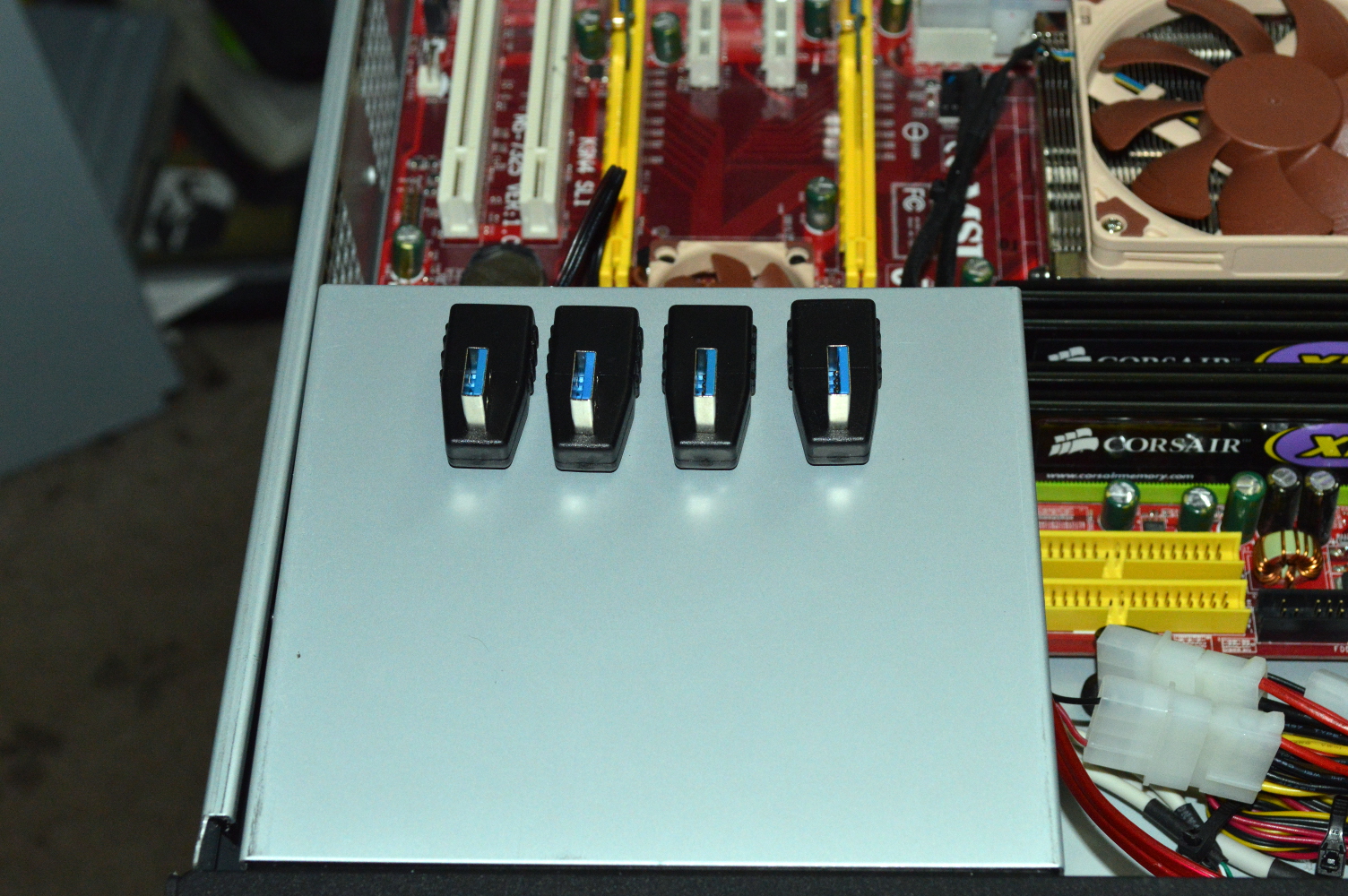
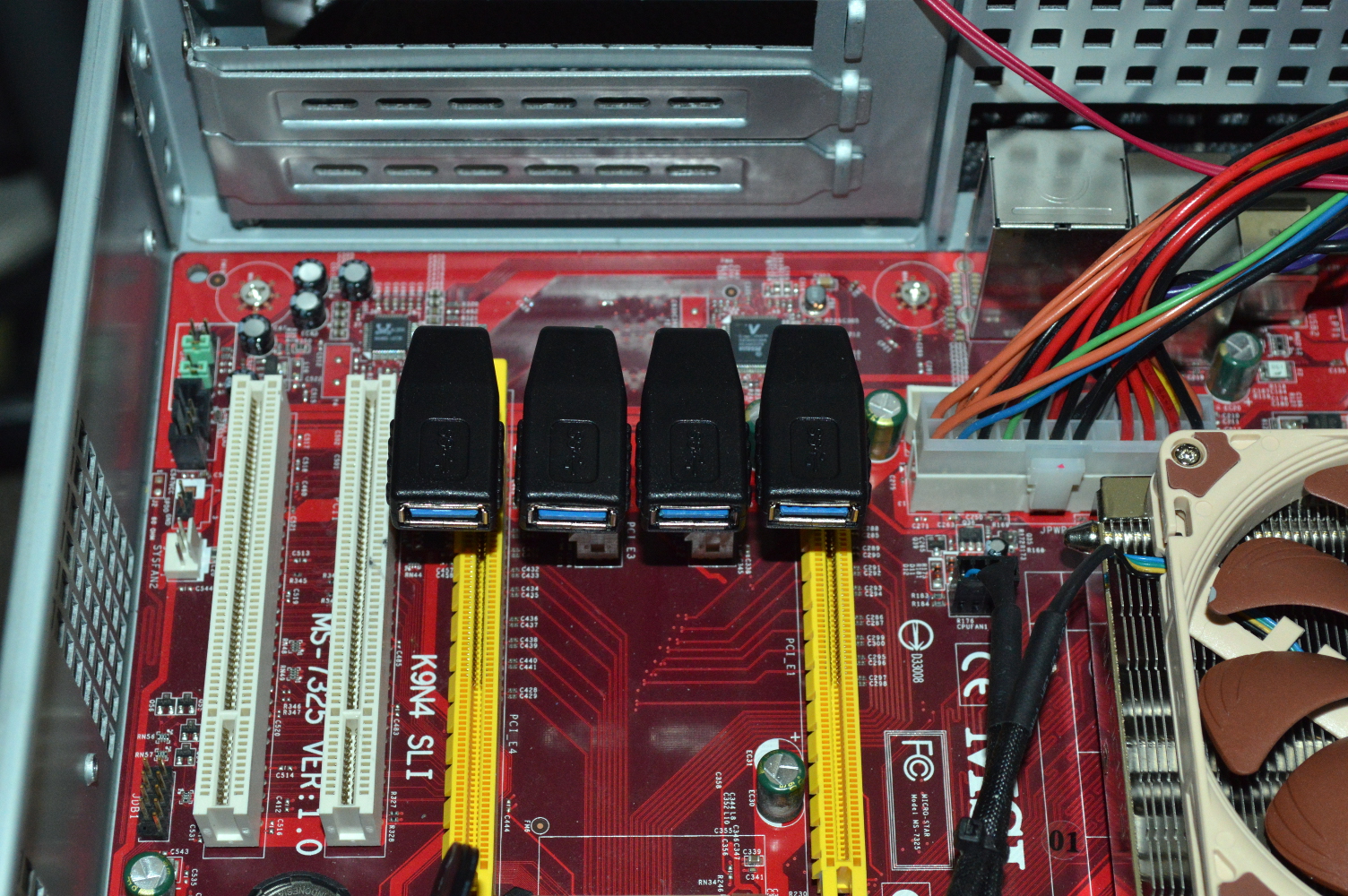
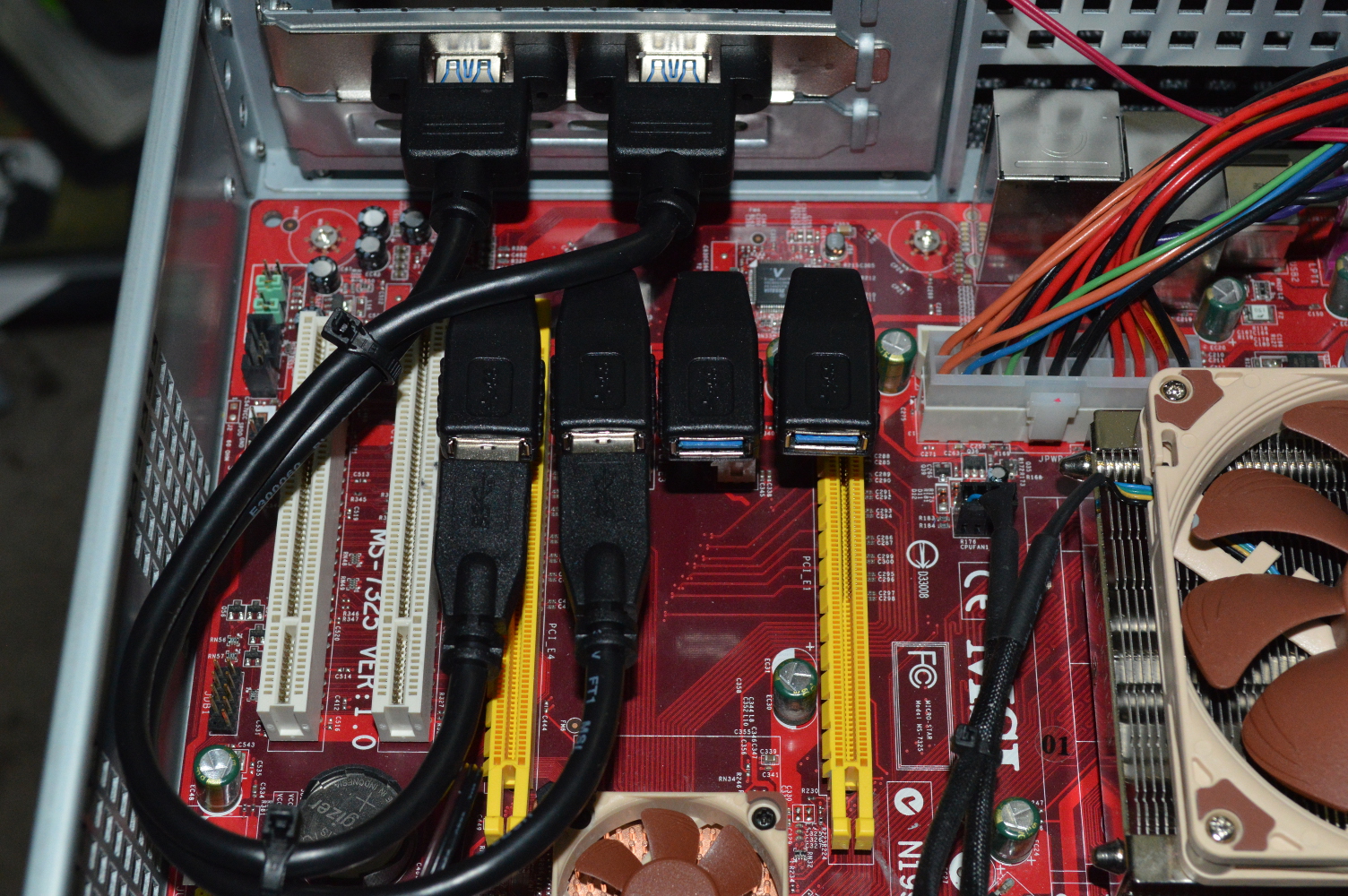
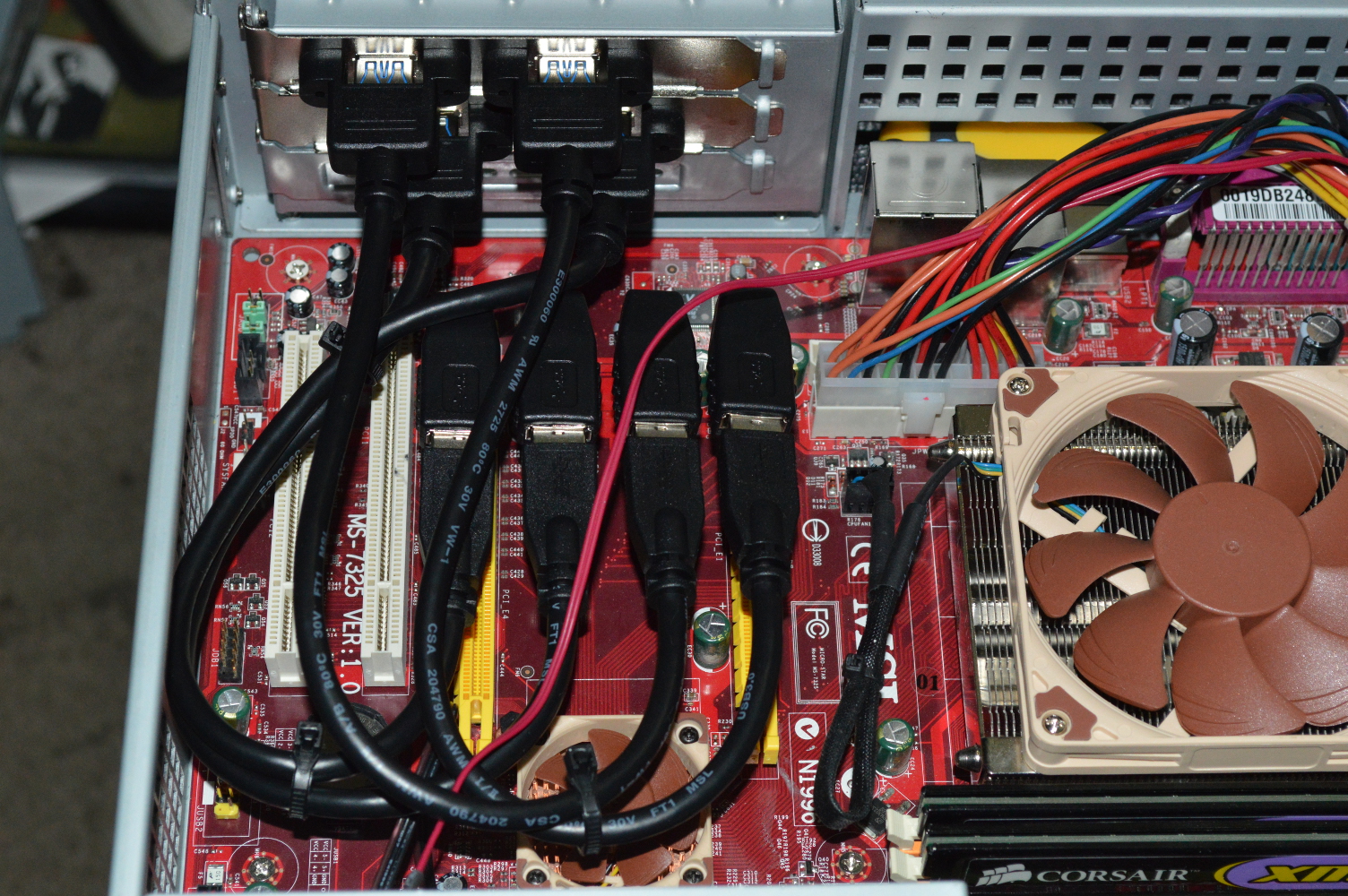
Except this didn’t work the way I’d hoped. The card in the first PCI-Express slot (far right) did not want to stay seated, and the system would not detect any graphics card plugged into it and the second one was touchy. I changed the first two PCI-Express slots over to use the original left-angle extension cables and all three cards were detected. I have the GTX 660 and 680 plugged into the USB connectors corresponding with those two slots.
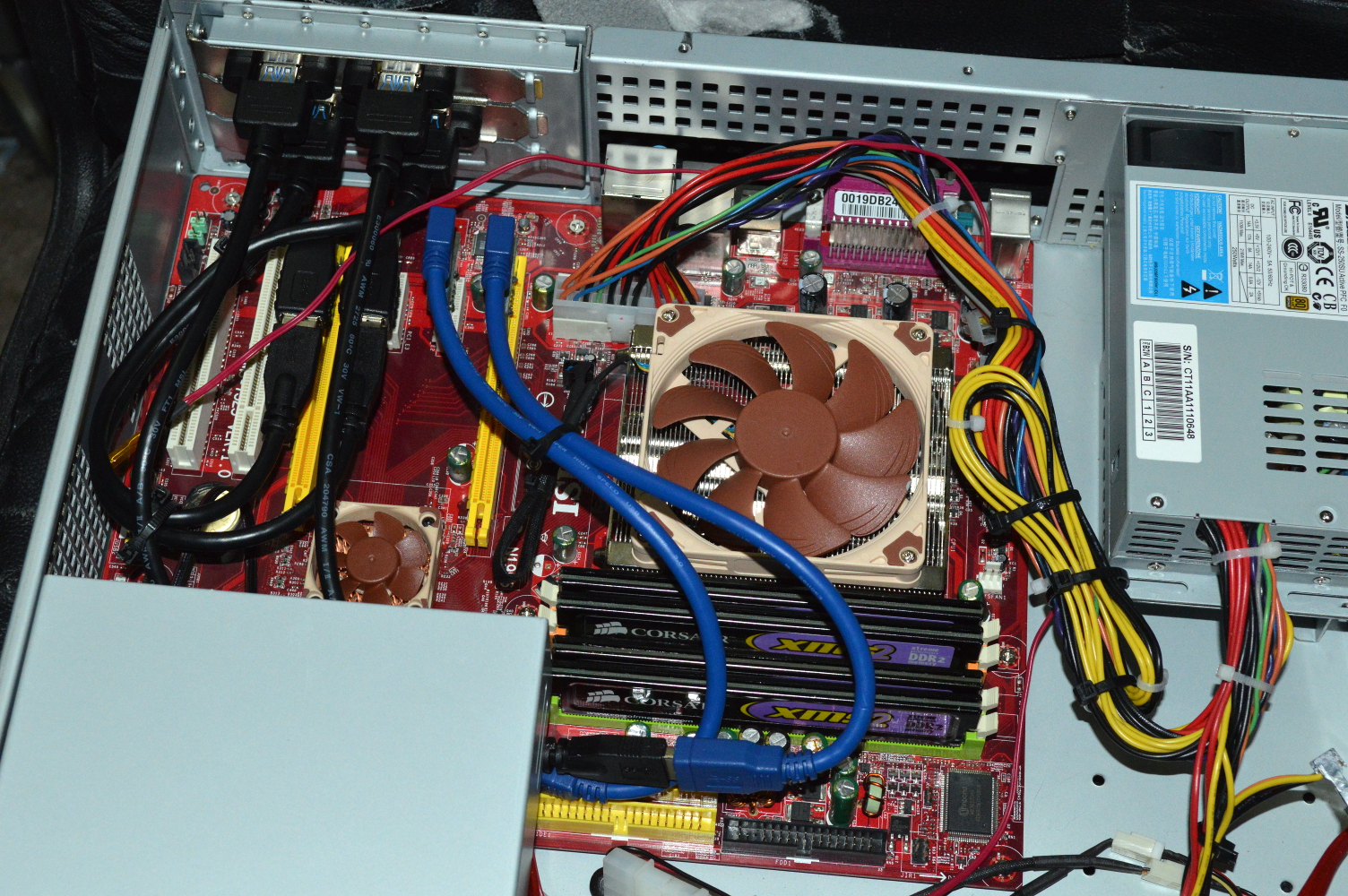
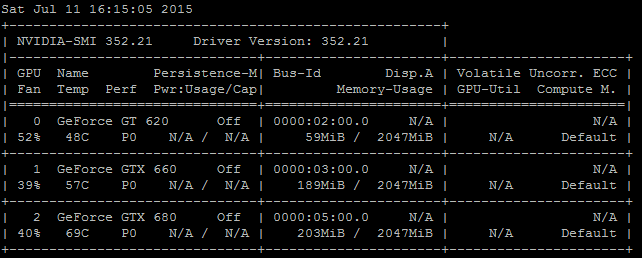
And the Berkeley client is using all three graphics cards. The GT 620 is significantly slower than the other two and doesn’t contribute nearly as much, but it’s still faster than either core on the CPU. The intent is to have two GTX 660s and two GTX 680s plugged into this system.
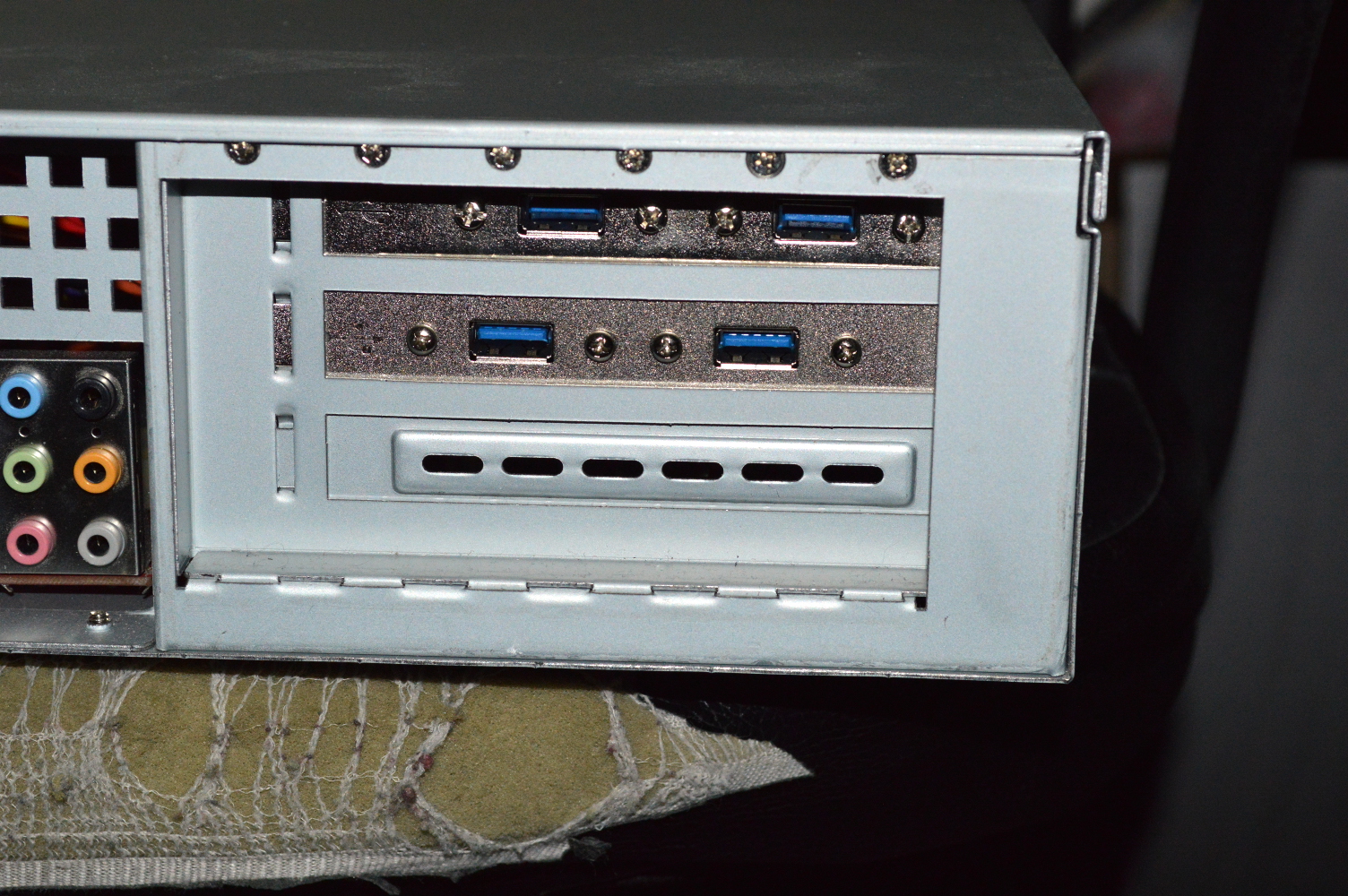


So that is pretty much it for this particular system. There aren’t any changes that will be needed to it. Next up for this project will be the custom cabinet and getting these cards on water.
The water cooling loop is going to be interesting for this because it’s something that really hasn’t been done before. Anywhere. At least not that I can see. Sure there are water cooled racks. I’ve seen examples of them online. But those are typically water-cooled blade servers hooked up to coolant manifolds that pipe coolant to and from external (i.e. outside the building) heat exchangers.
What I have planned is going to be relatively unique — about as unique as figuring out how to plug four graphics cards into a computer via standard USB connectors and cables. I highly doubt anyone has done that before.